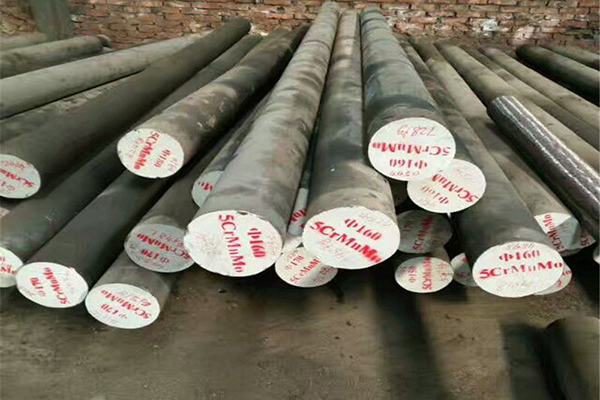

淬火裂纹与回火脆性
很多对力学性能与表面硬度请求高的大锻件,锻后要经粗加工,再进行调质热处理或表面淬火。在热处理时,由于温度急巨变更,将产生很大的温度应力。由于相变还产生构造应力,和锻件存在的残存应力叠加,合成的拉应力值要是跨越质料的抗拉强度,而且没有塑性变形松弛,将会产生种种形式的开裂和裂纹。例如纵向、横向、表面和中间裂纹,表面龟裂和上层剥离等。由于大锻件截面尺寸大,加热、冷却时温度漫衍不匀称,相变历程复杂,残存应力大,而且程度不同地存在着种种宏观和微观缺点,塑性差,韧性低,这都能加剧裂纹萌发与扩大的历程,往往造成即时的或延时的开裂破坏,乃至炸裂与天然置裂等,造成庞大经济损失。
对策是:
1)接纳合理的热处理规范,控制加热速率与冷却历程,削减加热缺点与温度应力;
2)幸免锻件中存在紧张的冶金缺点与残存应力;
3)淬火后及时回火。
回火脆性系碳化物析出或磷、锡、锑、砷等有害微量元素沿晶界聚集而惹起的脆性增大的倾向。
防止回火脆性的对策是:
1)削减钢中有害元素的含量;
2)削减钢中偏析;
3)幸免在回火脆性温度区热处理,适当快冷,防止有害组元富集。
自由锻件哪家好,就找唐山盛通锻造有限公司。
Quenching crack and temper brittleness
Many large forgings with high requirements on mechanical properties and surface hardness are subjected to roughing after forging, and then quenched and tempered or surface hardened. At the time of heat treatment, a large temperature stress is generated due to a sudden change in temperature. Since the phase transformation also produces tectonic stress, and the residual stress existing in the forging is superimposed, the resultant tensile stress value is the tensile strength across the material, and there is no plastic deformation relaxation, which will produce various forms of cracking and cracking. For example, longitudinal, transverse, surface and intermediate cracks, surface cracks and upper peeling. Due to the large cross-section size of large forgings, the temperature is unevenly distributed during heating and cooling, the phase transition process is complicated, the residual stress is large, and various macro and micro defects are present in different degrees. The plasticity is poor and the toughness is low, which can aggravate crack germination. With the expansion process, it often causes immediate or delayed cracking damage, and even bursting and natural cracking, resulting in huge economic losses.
The countermeasures are:
1) Accept reasonable heat treatment specifications, control heating rate and cooling history, and reduce heating defects and temperature stress;
2) Excessive metallurgical defects and residual stresses in forgings;
3) Tempering in time after quenching.
The temper brittleness carbide precipitation or the tendency of the harmful trace elements such as phosphorus, tin, antimony, and arsenic to aggregate along the grain boundary tend to increase.
The countermeasures against temper brittleness are:
1) reduce the content of harmful elements in steel;
2) reducing segregation in steel;
3) It is spared from heat treatment in the temper brittle temperature zone, and it is suitable for rapid cooling to prevent harmful component enrichment.
